I am looking for a simple circuit which can be used to limit the current flowing through a FET. There is a bus line which is pulled up to the battery voltage (12V) by a 510\$\Omega\$ resistor. A FET pulls the line low to transmit a pulse along the bus. In some cases it may be occur that the bus is directly connected to 12V, in which case the current through the FET needs to be limited.
We would probably use a 2n7002 FET, so the current needs to be limited to below 300mA. It does need to be able to sink up to about 200mAThe FET needs to provide a hard pull down, so adding an inline resistor is not an option.
I looked at using current limiting diodes (such as those from Central Semi) which have the perfect type of characteristic, but the current limit is too low.
What options are there which are simple and have a low component count?
